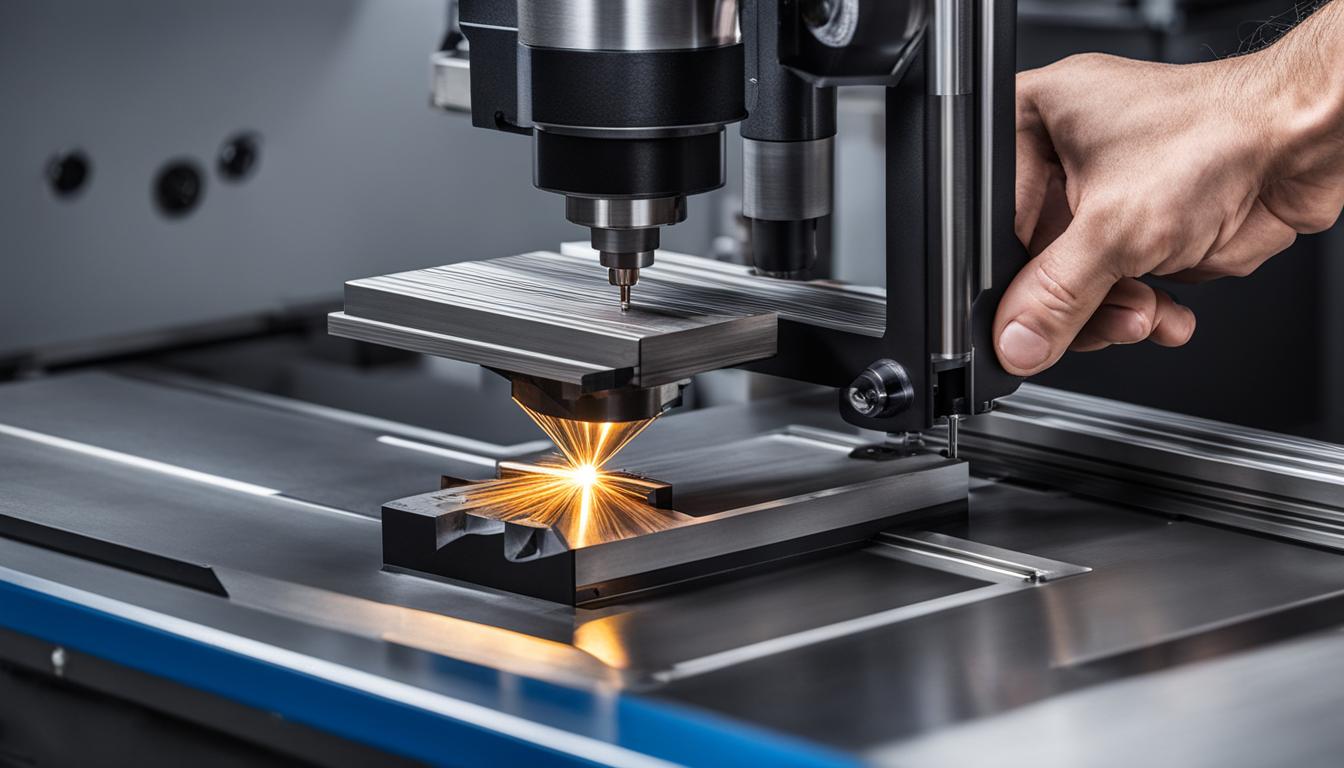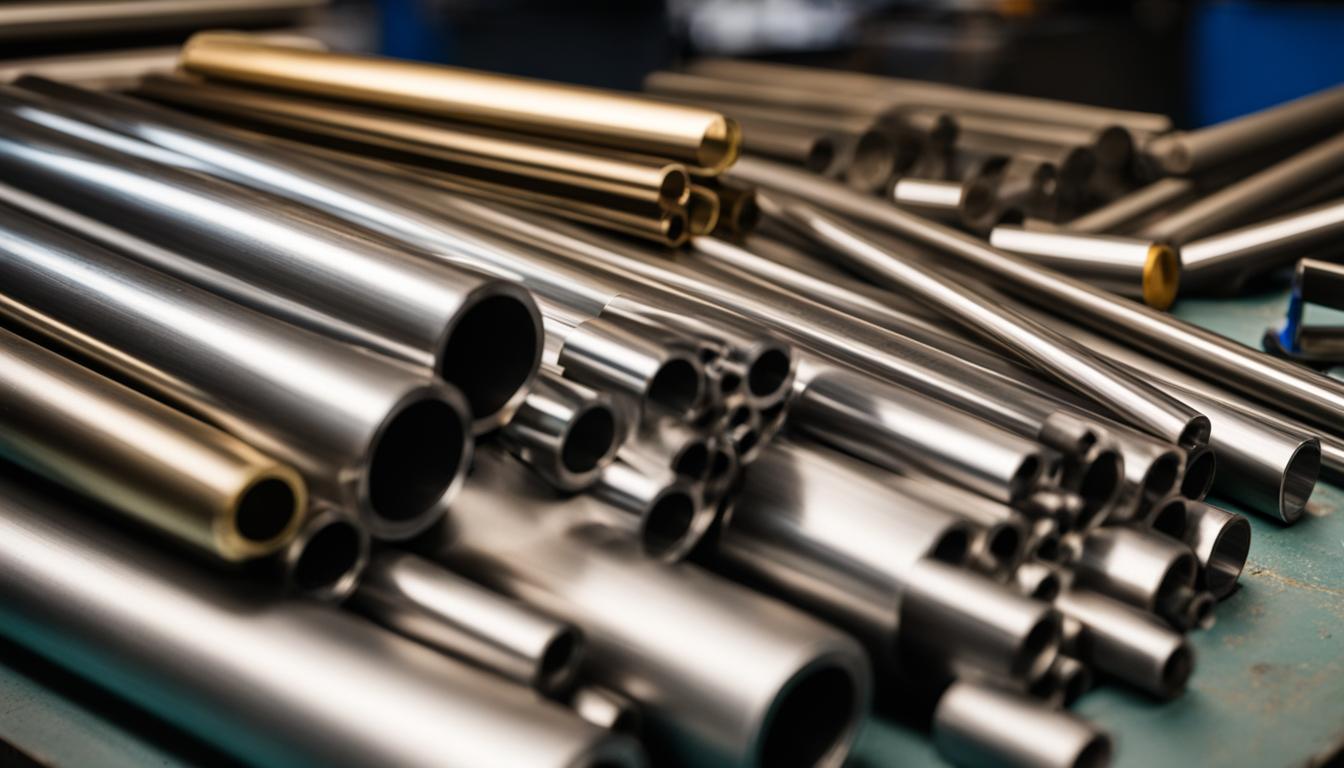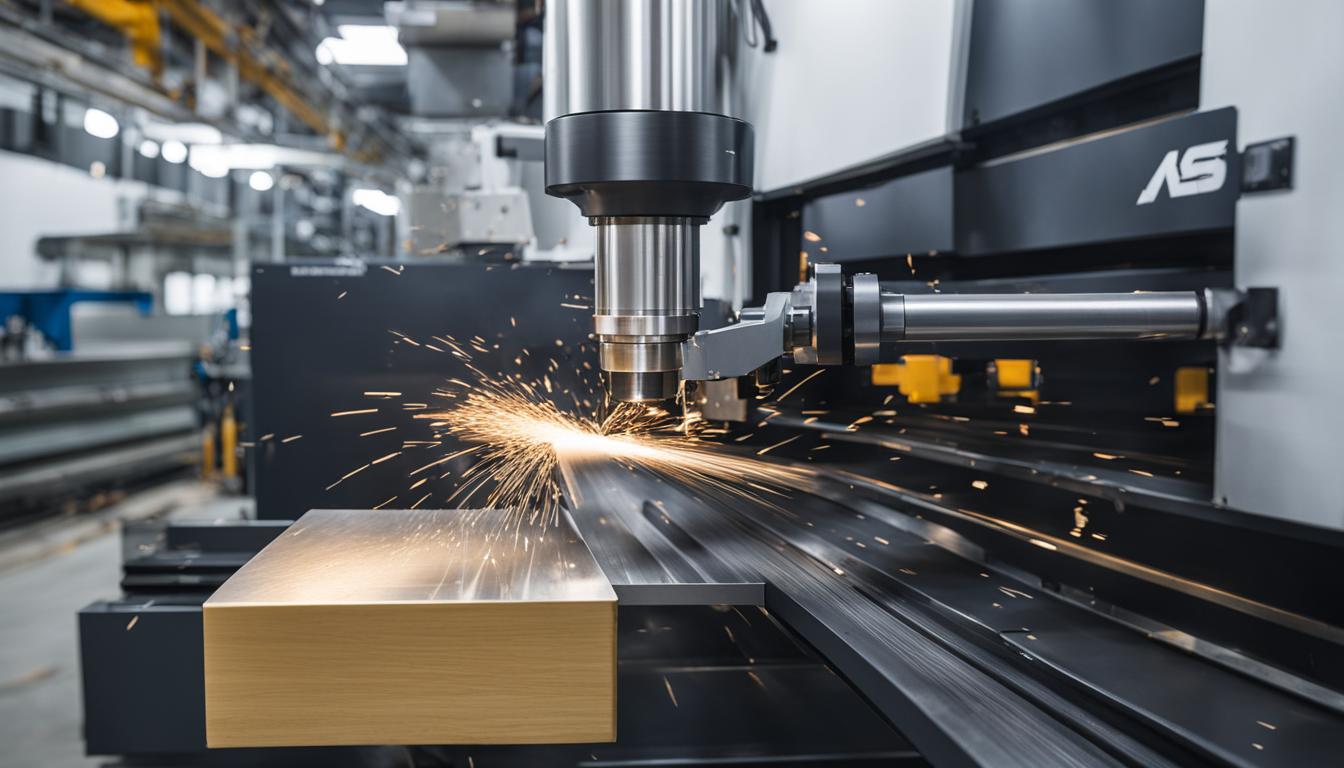Welcome to our comprehensive guide on CNC milling, where we will dive deep into the process, steps, and benefits of this machining technique. If you’ve ever wondered what CNC milling is and how it works, you’ve come to the right place. In this article, you’ll learn about the intricacies of CNC milling, from the basics to the types of machines used, and its applications across various industries.
CNC Milling Basics
CNC milling is an automated manufacturing technology that utilizes computer-controlled machines to remove material from a workpiece and produce the desired part. The process involves designing the part using CAD software and converting it into instructions using CAM software. These instructions are then loaded into the CNC machine, and the machining process begins.
When it comes to CNC milling, there are various cutting strategies and tools that can be used to achieve different outcomes. Some common strategies include plain milling, face milling, angular milling, contour milling, side milling, groove or slot milling, hole drilling, reaming, hole tapping, and gang milling. The choice of strategy depends on the specific requirements of the part being produced.
CNC milling machines are equipped with several essential components that work together to ensure precise and accurate machining. These components include the worktable, saddle, knee, column, spindle, machine tool, arbor, and ram. Each component plays a crucial role in the overall performance of the machine.
CNC milling is a versatile process that can be used with a wide range of materials, including metals, plastics, and even some exotic and precious metals. This makes it a popular choice in various industries that require high precision components, such as automotive, aerospace, electronics, and medical devices.
Example of CNC Milling Cutting Strategies:
| Cutting Strategy | Description |
|---|---|
| Plain Milling | Uses a cutter with teeth on the periphery and face to remove material simultaneously. |
| Face Milling | Uses a cutter with teeth on the periphery and face to remove material from the face of the workpiece. |
| Angular Milling | Uses a single-angle milling cutter to remove material at a specific angle. |
| Contour Milling | Follows the contour of a part to create complex shapes. |
| Side Milling | Uses a cutter to remove material from the side of the workpiece. |
| Groove or Slot Milling | Creates grooves or slots in the workpiece. |
| Hole Drilling | Creates holes in the workpiece. |
| Reaming | Enlarges and refines existing holes to achieve a precise diameter and finish. |
| Hole Tapping | Creates internal threads in the workpiece. |
| Gang Milling | Uses multiple cutters simultaneously to increase productivity and efficiency. |
CNC milling is a fundamental process in modern manufacturing, offering high precision and efficiency. With its ability to work with different materials and produce complex geometries, it has become a vital technology in many industries.
CNC Milling Process Steps
The CNC milling process consists of several steps that are followed to produce the final part. Understanding these steps is crucial for a successful CNC milling operation.
Step 1: Designing the Part
The process begins with designing the part using CAD (Computer-Aided Design) software. This involves creating a 3D model and ensuring that it adheres to Design for Manufacturability (DFM) principles. The design should consider factors such as material properties, machining capabilities, and assembly requirements.
Step 2: CAM Processing
Once the part design is complete, it is processed using CAM (Computer-Aided Manufacturing) software. The CAM software generates instructions for the CNC machine based on the design model. These instructions include information about the cutting tool, speeds and feeds, coolant engagement, and feature probing.
Step 3: Loading the Instructions
The CAM output is then loaded into the CNC machine, either directly or via a data transfer method. The instructions are fed into the machine’s controller, which interprets the data and carries out the machining operations accordingly.
Step 4: Fixturing the Workpiece
Before the machining process can begin, the workpiece is securely held in place using fixtures. Fixtures ensure proper alignment and stability during the cutting process, preventing any movement that could affect accuracy.
Step 5: Machining
With the workpiece properly fixtured, the CNC machine begins the machining process. The cutting tool moves along multiple axes, controlled by the machine’s controller, removing material in a precise and controlled manner. This process continues until the desired shape and dimensions are achieved.
Step 6: Finishing and Inspection
After the machining process is complete, the finished parts are inspected for quality and accuracy. Any necessary adjustments or additional finishing operations, such as deburring or surface treatment, are performed at this stage.
Step 7: Unloading the Parts
Once the parts have been inspected and finished, they are unloaded from the CNC machine. The parts can then be assembled, delivered to the customer, or undergo further post-processing if required.
| Step | Description |
|---|---|
| 1 | Designing the Part |
| 2 | CAM Processing |
| 3 | Loading the Instructions |
| 4 | Fixturing the Workpiece |
| 5 | Machining |
| 6 | Finishing and Inspection |
| 7 | Unloading the Parts |
Types of CNC Milling Machines
When it comes to CNC milling, there are various types of machines available to meet specific machining requirements. The two primary styles of CNC mills are Vertical Machining Centers (VMCs) and Horizontal Machining Centers (HMCs). Let’s explore these types in more detail:
1. Vertical Machining Centers (VMCs)
VMCs have a vertically oriented spindle along the Z-axis. This means that the cutting tool moves up and down to remove material from the workpiece. VMCs are commonly used for applications that involve drilling, milling, and tapping operations. Their vertical design offers advantages such as easy access to the workpiece and excellent chip evacuation.
2. Horizontal Machining Centers (HMCs)
HMCs, on the other hand, have a horizontally oriented spindle along the Z-axis. This means that the cutting tool moves horizontally to remove material. HMCs are often used for applications that require heavy cutting, such as machining large workpieces or performing face milling operations. Their horizontal design provides stability and rigidity, making them suitable for high-precision machining.
In addition to the style of the milling machine, CNC mills can also be categorized by the number of axes they possess. The more axes a machine has, the more complex machining operations it can perform. Here are some common multi-axis CNC milling machines:
3. Multi-Axis CNC Milling Machines
Multi-axis CNC mills have 3, 4, or 5 axes that enable them to perform intricate machining tasks. These additional axes allow for the movement of the cutting tool in multiple locations and angles, enabling the production of complex components with ease. The most advanced machines in this category are 5-axis CNC milling machines, which offer the highest level of flexibility and precision.
Here’s an overview of the different types of CNC milling machines:
| Type | Description |
|---|---|
| Vertical Machining Center (VMC) | A milling machine with a vertically oriented spindle along the Z-axis. |
| Horizontal Machining Center (HMC) | A milling machine with a horizontally oriented spindle along the Z-axis. |
| Multi-Axis CNC Milling Machines | Milling machines with 3, 4, or 5 axes to perform complex machining operations. |
Image:

Advantages of CNC Milling
CNC milling offers several advantages over traditional milling and other machining methods in terms of productivity, safety, consistency, finish quality, and flexibility.
- Improved Productivity: CNC milling enables high-speed machining and simultaneous operations, resulting in increased productivity and efficiency. With automated processes, parts can be manufactured at a faster rate, reducing production time and costs.
- Enhanced Safety: CNC milling eliminates the need for manual handling of tools and materials, reducing the risk of accidents and injuries. Operators can work in a safer environment, focusing on overseeing the production process rather than engaging in physical labor.
- Consistency: The automated nature of CNC milling ensures higher consistency in part production. Each part is machined with precision and accuracy, resulting in minimal variations and reliable quality control.
- Superior Finish Quality: CNC milling produces smoother and more precise surfaces compared to traditional milling methods. The advanced technology and controlled processes result in high-quality finished parts, free from imperfections or rough edges.
- Increased Flexibility: CNC milling can be used with a variety of materials, including metals and plastics. It also allows for the production of complex geometries with ease, making it suitable for manufacturing a wide range of parts and components.
Materials Used in CNC Milling
CNC milling is a versatile machining process that can work with a wide range of materials, including metals and plastics. The choice of material depends on the specific requirements of the part and the desired outcome. Let’s explore some of the common materials used in CNC milling.
Metals for CNC Milling
Metals are widely used in CNC milling due to their strength, durability, and corrosion resistance. Some common metals used in CNC milling include:
| Material | Characteristics |
|---|---|
| Aluminum | Lightweight, good strength-to-weight ratio, excellent machinability |
| Brass | High thermal and electrical conductivity, corrosion resistant |
| Bronze Alloys | Good wear resistance, high strength, suitable for bearings and gears |
| Carbon Steel | High strength, good machinability, affordable |
| Copper | High thermal and electrical conductivity, corrosion resistant |
| Iron | High strength, good machinability |
| Nickel | High corrosion resistance, high-temperature resistance |
| Stainless Steel | Corrosion resistant, good strength, suitable for various applications |
| Steel Alloys | Durable, versatile, excellent mechanical properties |
| Titanium | Lightweight, high strength, excellent corrosion resistance |
Plastics for CNC Milling
Plastics are another category of materials that can be machined using CNC milling. Some common plastics used in CNC milling include:
- ABS: Durable, impact resistant, good for prototypes
- Acetal: Low friction, high stiffness, excellent dimensional stability
- Acrylic: Transparent, high impact resistance, easy to machine
- Nylon: High strength, excellent wear resistance, good chemical resistance
- Polycarbonate: High impact strength, shatter resistant, lightweight
- PTFE: Low friction, excellent chemical resistance
- PVC: Good electrical insulation, fire-resistant
- Teflon: Low friction, excellent chemical resistance, high temperature resistant
Each material offers its own unique properties and may require different cutting strategies and tools. It’s essential to choose the right material for your CNC milling project to achieve the desired results.

CNC Milling Applications
CNC milling is a versatile machining process that is widely used in various industries that require high precision components. The following industries commonly utilize CNC milling:
- Automotive: CNC milling is essential for producing automotive parts with precise tolerances, such as engine components, transmission parts, and suspension components.
- Aerospace: In the aerospace industry, CNC milling is utilized for manufacturing complex and lightweight aircraft components, including turbine blades, structural parts, and landing gear.
- Electronics: CNC milling is employed in the production of electronic components, such as circuit boards, connectors, and heatsinks, ensuring the accuracy needed for optimal functionality.
- Medical Devices: CNC milling plays a crucial role in the production of medical devices, including implants, prosthetics, surgical instruments, and medical equipment parts, where precision is of utmost importance.
- Industrial Equipment: CNC milling is utilized for manufacturing various industrial components, such as gears, bearings, shafts, and hydraulic/pneumatic system parts, ensuring their reliability and performance.
- Mold-Making: CNC milling is commonly used in mold-making processes to produce molds for injection molding, die casting, and other manufacturing methods, allowing for precise replication of complex shapes.
CNC milling excels in producing complex and intricate parts that require tight tolerances and excellent surface finish. Its ability for precise replication enables mass production with good part-to-part repeatability, making it ideal for high-volume manufacturing. The versatility of CNC milling ensures its indispensability across a wide range of industries, where precise and reliable components are necessary.
CNC Milling vs. Traditional Milling
CNC milling offers several advantages over traditional milling methods. Traditional milling involves manual handling of the workpiece, which can be time-consuming and prone to human error. CNC milling, on the other hand, is automated and requires minimal supervision once the machine is programmed.
CNC milling also offers higher precision and accuracy compared to traditional milling. The programmed instructions ensure consistent and repeatable machining, resulting in high-quality and precise parts. With CNC milling, operators can achieve tight tolerances and complex geometries with ease.
In terms of production rates and efficiency, CNC milling outperforms traditional milling. The automated nature of CNC milling allows for faster machining speeds and simultaneous operations, reducing production time. It also eliminates the need for manual tool changes, increasing efficiency and reducing downtime.
While traditional milling still has its uses, CNC milling has become the preferred method for many industries due to its numerous advantages. The combination of automation, precision, and efficiency has revolutionized the manufacturing industry.
Comparison of CNC Milling and Traditional Milling
| CNC Milling | Traditional Milling |
|---|---|
| Automated and requires minimal supervision | Manual handling of the workpiece |
| Higher precision and accuracy | Prone to human error |
| Faster production rates and increased efficiency | Time-consuming |
| Allows for complex geometries | Limited capabilities |
Conclusion
CNC milling is a powerful and versatile machining process that has revolutionized the manufacturing industry. With its high precision, repeatability, and production rates, CNC milling offers numerous advantages over traditional milling methods.
One of the key strengths of CNC milling is its ability to work with a wide range of materials, including metals and plastics. This flexibility makes it a valuable tool in industries that require high precision components, such as automotive, aerospace, electronics, and medical devices.
By following a carefully designed workflow that includes design, CAM processing, and machining, CNC milling ensures accurate and precise machining. The use of specialized CNC milling machines with critical components working together further enhances the quality and consistency of the final products.
Thanks to CNC milling, manufacturers can enjoy improved productivity, reduced labor costs, increased safety, higher consistency, better finish quality, and increased flexibility. The ability to produce complex geometries with ease and efficiency has transformed the way parts are manufactured, making CNC milling an essential process in modern manufacturing.
